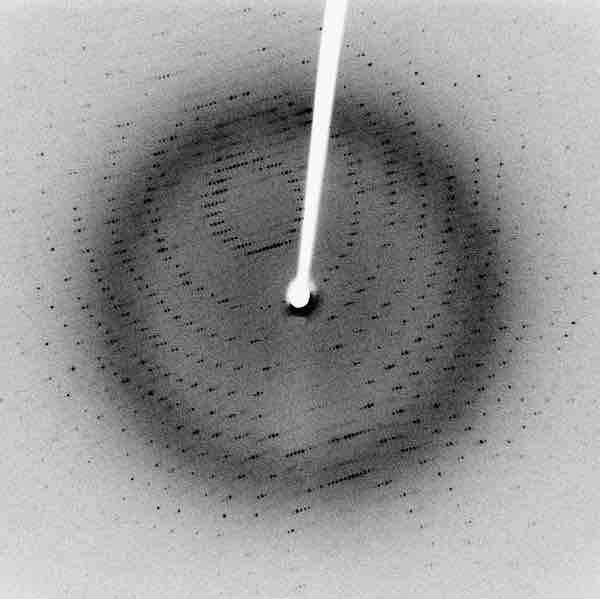Diffraction Grating
A diffraction grating is an optical component with a periodic structure that splits and diffracts light into several beams travelling in different directions. The directions of these beams depend on the spacing of the grating and the wavelength of the light so that the grating acts as the dispersive element. Because of this, gratings are often used in monochromators, spectrometers, wavelength division multiplexing devices, optical pulse compressing devices, and many other optical instruments.
A photographic slide with a fine pattern of purple lines forms a complex grating. For practical applications, gratings generally have ridges or rulings on their surface rather than dark lines. Such gratings can be either transmissive or reflective. Gratings which modulate the phase rather than the amplitude of the incident light are also produced, frequently using holography.
Ordinary pressed CD and DVD media are every-day examples of diffraction gratings and can be used to demonstrate the effect by reflecting sunlight off them onto a white wall. (see ). This is a side effect of their manufacture, as one surface of a CD has many small pits in the plastic, arranged in a spiral; that surface has a thin layer of metal applied to make the pits more visible. The structure of a DVD is optically similar, although it may have more than one pitted surface, and all pitted surfaces are inside the disc. In a standard pressed vinyl record when viewed from a low angle perpendicular to the grooves, one can see a similar, but less defined effect to that in a CD/DVD. This is due to viewing angle (less than the critical angle of reflection of the black vinyl) and the path of the light being reflected due to being changed by the grooves, leaving a rainbow relief pattern behind.

Readable Surface of a CD
The readable surface of a Compact Disc includes a spiral track wound tightly enough to cause light to diffract into a full visible spectrum.
Some bird feathers use natural diffraction grating which produce constructive interference, giving the feathers an iridescent effect. Iridescence is the effect where surfaces seem to change color when the angle of illumination is changed. An opal is another example of diffraction grating that reflects the light into different colors.
X-Ray Diffraction
X-ray crystallography is a method of determining the atomic and molecular structure of a crystal, in which the crystalline atoms cause a beam of X-rays to diffract into many specific directions. By measuring the angles and intensities of these diffracted beams, a crystallographer can produce a three-dimensional picture of the density of electrons within the crystal. From this electron density, the mean positions of the atoms in the crystal can be determined, as well as their chemical bonds, their disorder and various other information.
In an X-ray diffraction measurement, a crystal is mounted on a goniometer and gradually rotated while being bombarded with X-rays, producing a diffraction pattern of regularly spaced spots known as reflections (see ). The two-dimensional images taken at different rotations are converted into a three-dimensional model of the density of electrons within the crystal using the mathematical method of Fourier transforms, combined with chemical data known for the sample.

Reflections in Diffraction Patterns
Each dot, called a reflection, in this diffraction pattern forms from the constructive interference of scattered X-rays passing through a crystal. The data can be used to determine the crystalline structure.